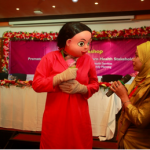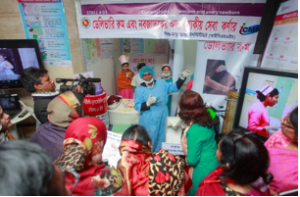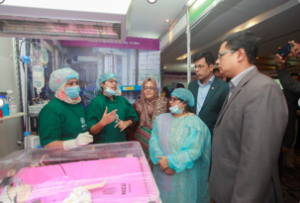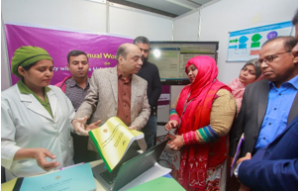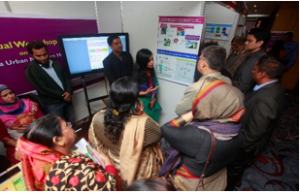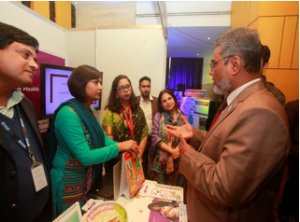By Wahida Siraj, Sharmin Akter, Tahrim Chowdhury and Lyndsey Garg
Bangladesh has made substantial progress in improving newborn and child health, as well as reducing mortality, important advances that are globally recognized. However, newborn deaths and reduction in mortality rates are still a concern. According to the Bangladesh Demographic & Health Survey (BDHS) 2017-18 report, the neonatal mortality rate is 30 deaths per 1,000 live births. The country’s neonatal mortality rate contributes 67% to under-five mortality, with 31% of newborn deaths attributable to complications of being born too early.
Bangladesh, which stands fourth among the ten countries with highest preterm birth in the world, aims to reduce the neonatal mortality to 12 per 1,000 live births by 2030, as outlined in the Sustainable Development Goals targets. Yet, rapid migration of rural populations to urban slums is a great challenge for access to and utilization of maternal and newborn health services. In Dhaka 57.4% deliveries take place at home and only 4.4% (BDHS 17-18) of newborns born at home receive essential newborn care just after birth. Preterm services are nonexistent at the primary health care or community levels.
Save the Children, through the Improving Newborn Survival Project (INSP), organized and convened a one-day stakeholder workshop in collaboration with the Ministry of Health and Family Welfare earlier this year focusing on care for premature babies in urban areas. Participants included a wide range of MOHFW representatives, including officials responsible for maternal, newborn, child and adolescent health, as well as family planning. The workshop also counted on the participation of representatives from urban health facilities, medical professional associations, USAID, UNICEF, WHO, private sector and implementing organizations including icddrb, Ipas, MaMoni MNCSP & Ujjibon project of Save the Children, Plan International and the Surjer Hashi Network and Dhaka City Corporations.
One of the highlights of the event was a marketplace, where participants shared lessons on how to increase the uptake of preterm birth services by urban stakeholders in Dhaka, including challenges and successes. The marketplace was organized to allow for participant engagement in demonstrations of essential care for preterm births, as well as for all newborns; capacity building of service providers; record keeping, reporting and supervision; monitoring of preterm cases from facility to central levels; referral and follow-up for prematurity in urban areas; and behavior change for demand generation in urban areas. At the marketplace, organizers also displayed a miniature “mock-up” of a KMC room and SCANU for preterm services.
By the end of the one-day workshop, participants agreed on a way forward that included a focus on three key areas: (1) incorporation and integration of newborn health programs, including preterm services, for urban areas including service preparedness and readiness; (2) improvement of urban area coordination and referral among the government, private and NGO health facilities; and (3) Incorporation of newborn care indicators and improved linkage with national HMIS to increase use of data for decision-making.

